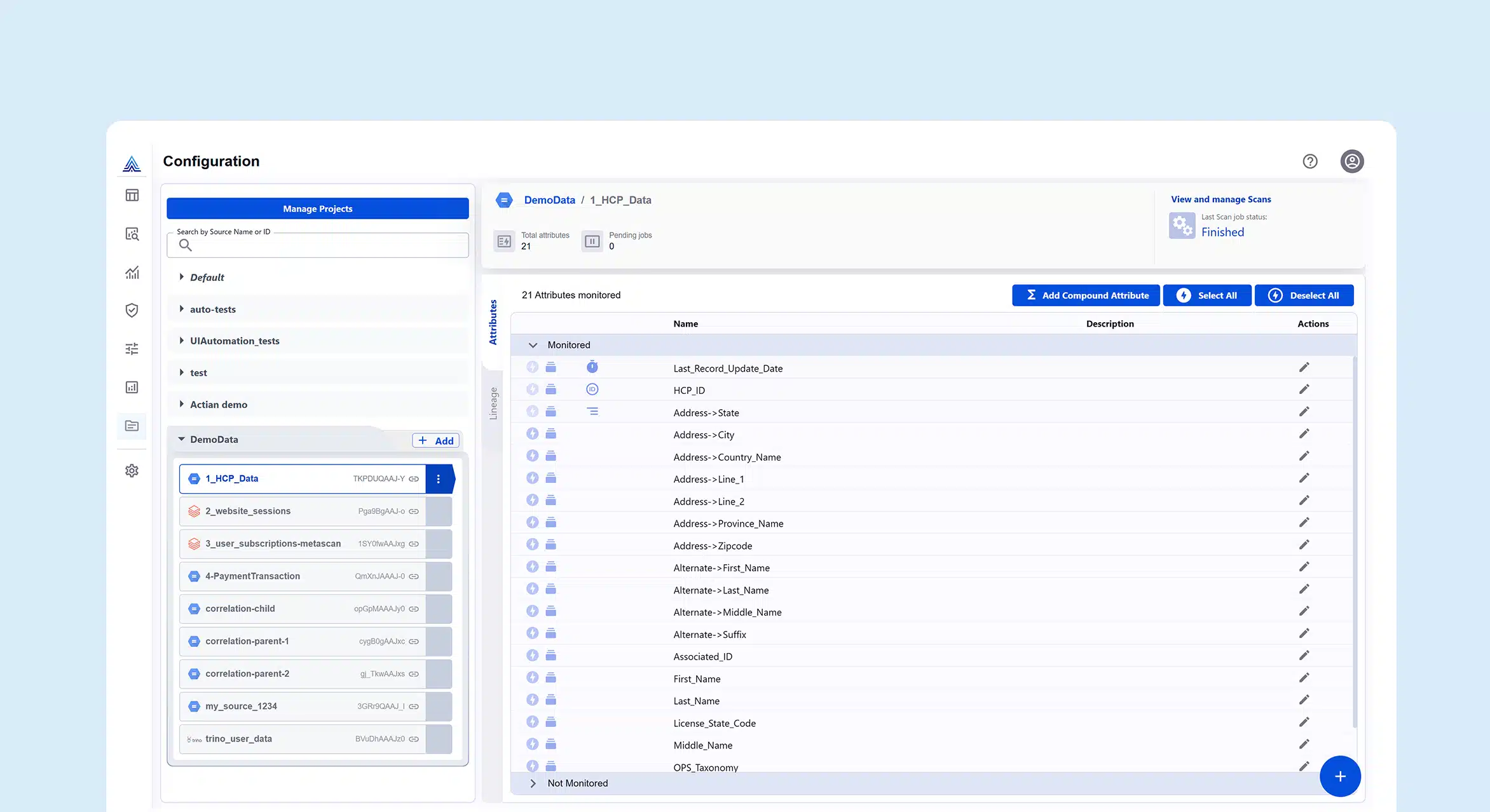What is Data Downtime?
Actian Corporation
June 26, 2025

Data downtime occurs when data is missing, inaccurate, delayed, or otherwise unusable. The effects ripple through an organization by disrupting operations, misleading decision-makers, and eroding trust in systems. Understanding what data downtime is, why it matters, and how to prevent it is essential for any organization that relies on data to drive performance and innovation.
The Definition of Data Downtime
Data downtime refers to any period during which data is inaccurate, missing, incomplete, delayed, or otherwise unavailable for use. This downtime can affect internal analytics, customer-facing dashboards, automated decision systems, or machine learning pipelines.
Unlike traditional system downtime, which is often clearly measurable, data downtime can be silent and insidious. Data pipelines may continue running, dashboards may continue loading, but the information being processed or displayed may be wrong, incomplete, or delayed. This makes it even more dangerous, as issues can go unnoticed until they cause significant damage.
Why Data Downtime Matters to Organizations
Organizations depend on reliable data to:
- Power real-time dashboards.
- Make strategic decisions.
- Serve personalized customer experiences.
- Maintain compliance.
- Run predictive models.
When data becomes unreliable, it undermines each of these functions. Whether it’s a marketing campaign using outdated data or a supply chain decision based on faulty inputs, the result is often lost revenue, inefficiency, and diminished trust.
Causes of Data Downtime
Understanding the root causes of data downtime is key to preventing it. The causes generally fall into three broad categories.
Technical Failures
These include infrastructure or system issues that prevent data from being collected, processed, or delivered correctly. Examples include:
- Broken ETL (Extract, Transform, Load) pipelines.
- Server crashes or cloud outages.
- Schema changes that break data dependencies.
- Latency or timeout issues in APIs and data sources.
Even the most sophisticated data systems can experience downtime if not properly maintained and monitored.
Human Errors
Humans are often the weakest link in any system, and data systems are no exception. Common mistakes include:
- Misconfigured jobs or scripts.
- Deleting or modifying data unintentionally.
- Incorrect logic in data transformations.
- Miscommunication between engineering and business teams.
Without proper controls and processes, even a minor mistake can cause major data reliability issues.
External Factors
Sometimes, events outside the organization’s control contribute to data downtime. These include:
- Third-party vendor failures.
- Regulatory changes affecting data flow or storage.
- Cybersecurity incidents such as ransomware attacks.
- Natural disasters or power outages.
While not always preventable, the impact of these events can be mitigated with the right preparations and redundancies.
Impact of Data Downtime on Businesses
Data downtime is not just a technical inconvenience; it can also be a significant business disruption with serious consequences.
Operational Disruptions
When business operations rely on data to function, data downtime can halt progress. For instance:
- Sales teams may lose visibility into performance metrics.
- Inventory systems may become outdated, leading to stockouts.
- Customer service reps may lack access to accurate information.
These disruptions can delay decision-making, reduce productivity, and negatively impact customer experience.
Financial Consequences
The financial cost of data downtime can be staggering, especially in sectors such as finance, e-commerce, and logistics. Missed opportunities, incorrect billing, and lost transactions all have a direct impact on the bottom line. For example:
- A flawed pricing model due to incorrect data could lead to lost sales.
- Delayed reporting may result in regulatory fines.
- A faulty recommendation engine could hurt conversion rates.
Reputational Damage
Trust is hard to earn and easy to lose. When customers, partners, or stakeholders discover that a company’s data is flawed or unreliable, the reputational hit can be long-lasting.
- Customers may experience problems with ordering or receiving goods.
- Investors may question the reliability of reporting.
- Internal teams may lose confidence in data-driven strategies.
Data transparency is a differentiator for businesses, and reputational damage can be more costly than technical repairs in the long run.
Calculating the Cost of Data Downtime
Understanding the true cost of data downtime requires a comprehensive look at both direct and indirect impacts.
Direct and Indirect Costs
Direct costs include things like:
- SLA penalties.
- Missed revenue.
- Extra staffing hours for remediation.
Indirect costs are harder to measure but equally damaging:
- Loss of customer trust.
- Delays in decision-making.
- Decreased employee morale.
Quantifying these costs can help build a stronger business case for investing in data reliability solutions.
Industry-Specific Impacts
The cost of data downtime varies by industry.
- Financial Services: A delayed or incorrect trade execution can result in millions of dollars in losses.
- Retail: A single hour of product pricing errors during a sale can lead to thousands of missed sales or customer churn.
- Healthcare: Inaccurate patient data can lead to misdiagnoses or regulatory violations.
Understanding the specific stakes for an organization’s industry is crucial when prioritizing investment in data reliability.
Long-Term Financial Implications
Recurring or prolonged data downtime doesn’t just cause short-term losses; it erodes long-term value. Over time, companies may experience:
- Slower product development due to data mistrust.
- Reduced competitiveness from poor decision-making.
- Higher acquisition costs from churned customers.
Ultimately, organizations that cannot ensure consistent data quality will struggle to scale effectively.
How to Prevent Data Downtime
Preventing data downtime requires a holistic approach that combines technology, processes, and people.
Implementing Data Observability
Data observability is the practice of understanding the health of data systems through monitoring metadata like freshness, volume, schema, distribution, and lineage. By implementing observability platforms, organizations can:
- Detect anomalies before they cause damage.
- Monitor end-to-end data flows.
- Understand the root cause of data issues.
This proactive approach is essential in preventing and minimizing data downtime.
Enhancing Data Governance
Strong data governance ensures that roles, responsibilities, and standards are clearly defined. Key governance practices include:
- Data cataloging and classification.
- Access controls and permissions.
- Audit trails and version control.
- Clear ownership for each dataset or pipeline.
When governance is embedded into the data culture of an organization, errors and downtime become less frequent and easier to resolve.
Regular System Maintenance
Proactive system maintenance can help avoid downtime caused by technical failures. Best practices include:
- Routine testing and validation of pipelines.
- Scheduled backups and failover plans.
- Continuous integration and deployment practices.
- Ongoing performance optimization.
Just like physical infrastructure, data infrastructure needs regular care to remain reliable.
More on Data Observability as a Solution
More than just a buzzword, data observability is emerging as a mission-critical function in modern data architectures. It shifts the focus from passive monitoring to active insight and prediction.
Observability platforms provide:
- Automated anomaly detection.
- Alerts on schema drift or missing data.
- Data lineage tracking to understand downstream impacts.
- Detailed diagnostics for faster resolution.
By implementing observability tools, organizations gain real-time insight into their data ecosystem, helping them move from reactive firefighting to proactive reliability management.
Actian Can Help Organize Data and Reduce Data Downtime
Data downtime is a serious threat to operational efficiency, decision-making, and trust in modern organizations. While its causes are varied, its consequences are universally damaging. Fortunately, by embracing tools like data observability and solutions like the Actian Data Intelligence Platform, businesses can detect issues faster, prevent failures, and build resilient data systems.
Actian offers a range of products and solutions to help organizations manage their data and reduce or prevent data downtime. Key capabilities include:
- Actian Data Intelligence Platform: A cloud-native platform that supports real-time analytics, data integration, and pipeline management across hybrid environments.
- End-to-End Visibility: Monitor data freshness, volume, schema changes, and performance in one unified interface.
- Automated Recovery Tools: Quickly detect and resolve issues with intelligent alerts and remediation workflows.
- Secure, Governed Data Access: Built-in governance features help ensure data integrity and regulatory compliance.
Organizations that use Actian can improve data trust, accelerate analytics, and eliminate costly disruptions caused by unreliable data.
Subscribe to the Actian Blog
Subscribe to Actian’s blog to get data insights delivered right to you.
- Stay in the know – Get the latest in data analytics pushed directly to your inbox.
- Never miss a post – You’ll receive automatic email updates to let you know when new posts are live.
- It’s all up to you – Change your delivery preferences to suit your needs.
Subscribe
(i.e. sales@..., support@...)




